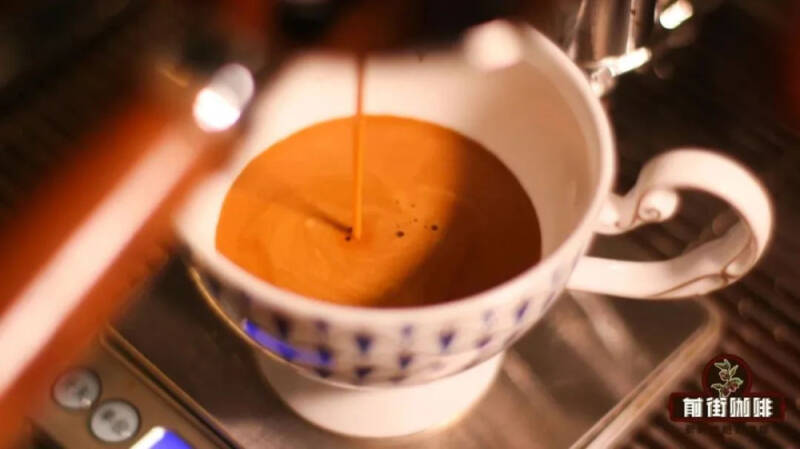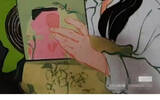What is the appropriate concentration of American extraction? Basic knowledge sharing of espresso extraction tutorial
For friends who like espresso, the purpose of adjusting parameters after booting is often not to concentrate itself, but to see whether the fancy coffee blended based on it tastes good, such as whether the American style after adding water is fragrant enough, whether it will be bitter, whether the latte with milk is strong enough, whether it is mellow, etc., so the compatibility of concentrate must be high.
As the number of attempts increased, everyone gradually figured out some patterns and could roughly find a combination of parameters that matched coffee. But at the same time, some friends who pursued taste also developed many extraction-related questions. Among them, Qianjie was asked the most many times: Is it necessary to use different parameters to extract when making American and latte?
Why adjust the extraction parameters of espresso coffee?
Just like the hand-flushing that is often talked about on the front street, in the extraction mode of the Italian coffee machine, the release of soluble flavor substances is also in a certain order.
After the coffee cake is completely soaked with hot water, it will immediately enter a formal extraction stage. The caffeine, organic acids, lipids, melanoids, and carbohydrates in the coffee will be released with the hot water at this moment. Their corresponding taste characteristics are what we usually call aroma, acid, sweetness, and bitterness (astringent taste).
When the espresso drops from the handle, you will find that the coffee liquor is constantly changing. The farther it goes, the darker the color, which means that the more substances contained in the liquid, the taste is not only strong but also stimulating, and the lighter the color will be in the future. Flavor substances will decrease accordingly. When the concentration begins to turn white, it means that the good substances are about to be released, which also reminds us that we need to end the extraction.
Therefore, in order for the final coffee to have a positive taste performance, we must not only judge the extraction process through the naked eye, but also grasp the corresponding parameters based on the actual situation.
How to determine the extraction parameters for concentration?
Although there are many factors that affect a cup of concentrated extraction, in actual operation, the only things we can adjust are water temperature, pressure, grinding degree, powder amount, and liquid output volume. The first two are generally fixed and rarely change, so the focus of extraction is usually placed on the three parameters of grinding degree, powder amount, and liquid output volume. The combination of powder amount and liquid output volume is what the barista calls the powder-to-liquid ratio.
Whether it is for newcomers who have just started or family enthusiasts who occasionally make a cup, it is undoubtedly the best solution to directly applying a conservative extraction formula than spending a lot of coffee beans and time trying one by one. It is known that the extraction ratio of Italian concentrated powder to liquid recommended by the Fine Coffee Association SCA falls between 1:1.5 and 1:2.5. However, due to the large differences in the values and in order to better understand, practitioners including Qianjie In most cases, it is recommended to apply the extraction formula of "powder to liquid ratio 1:2, time 25-30 seconds" first before making fine adjustments on this basis.
Take the Qianjie Warm Sun Italian coffee produced as standard in the store as an example. When extracting the first handful of concentrated coffee, we will use 20g of coffee powder to extract 40g of coffee liquor and observe whether the time falls within 25 to 30 seconds.
If the time is not within the recommended range, and the extraction status is obviously wrong, such as no grease at all, white color, sour taste, slow failure of coffee liquor to flow out, serious splashing, etc., after eliminating the reasons for the coffee beans themselves, the problem is large. The probability is that the grinding degree is not found correctly and needs to be adjusted first. For specific improvement directions, please refer to the popular science articles shared previously.
If the actual extraction time of concentration falls within 25 to 30 seconds, or only 1 to 3 seconds, and the coffee has a moderate oil layer, we can directly taste and judge the extraction status. When concentrated and drunk, there is vanilla, cream, and berry aroma without any bitterness, which means that the coffee has been reasonably extracted, which means that there is no major problem with the grinding degree, and it also means that we can move to the next stage, namely the test of fancy coffee.
Then, we used the "universal formula" to test the concentration and make it into American or latte. If there are no major flavor flaws in the taste and both show good concentration, then the extraction parameters for the day's concentration can be smoothly unified., no need to adjust.
Under what circumstances should American and latte be extracted with different parameters?
As mentioned at the beginning of the front street, because the difference between American and latte is that one adds water and one adds milk, the taste pursued by the two is actually different, so if you want to highlight their essence, you must find a more "fitting" extraction scheme.

As a cup of coffee diluted with water after extraction, whether it is hot American or iced American, its flavor core is still in the dozens of milliliters of concentrate. The so-called good American style, the front street thinks that it should first be with full coffee aroma, smooth and balanced taste, after drinking not only have aftertaste, but also will not feel bitter, sour, astringent and other defects. In other words, as long as the coffee is not extracted, the more flavor substances concentrated, the richer the taste of the American will be.
Take Qianjie's classic Italian blended coffee beans, which are mainly rich in oil, as an example. When the concentrate made by applying the 1:2 powder-to-liquid ratio formula, it shows the basic flavors of dark chocolate, cream, and fried hazelnuts, and can be added 5 times hot water. After that, it is slightly bland, especially lacking in aftertaste.
In order to make it have a better taste, Qianjie will increase the extraction rate of the concentration by adjusting the powder-to-liquid ratio to 1:2.2, that is, 20g of coffee powder extracts 44g of liquid (the time is extended by 1 to 2 seconds). After diluted into American style, the concentrate not only retains the original palatability, but also retains the balance and mellow taste, as well as the good taste such as cleanliness and sweetness.
After talking about American style, let's continue to watch dairy coffee. I believe that in the eyes of many people, a delicious latte should be reflected in the aspects of full coffee taste, outstanding lactose sweetness, and no bitterness burden. For more details on production, please refer to the article.
Because a large amount of milk is mixed in, as a base, the concentration here not only needs to provide good flavor, but also needs to successfully convert lactose into sweetness, thereby improving the richness of the entire cup of coffee. Since milk itself is concentrated (9-10%), if you use moderately roasted beans, make sure that the flavor of the coffee is not masked when combined with milk.
Take the former street strawberry candy espresso Italian blend as an example. Due to the emphasis on the aroma of flowers and fruits, a medium degree of baking is adopted. If the "universal formula" is directly applied to extract and concentrate and then serve as the base of the latte, then after adding fresh milk, the positive flavor substances expressed in the original concentrate will likely be covered up, and it will taste like a cup of pale "coffee-flavored milk."
In order to retain the "large cup size" characteristic of the latte and allow the coffee to obtain more light aroma, we can increase the overall concentration by only reducing the extraction amount, thereby highlighting the coffee flavor and milk sweetness. Adjust the powder-to-liquid ratio to 1:1.5 for extraction, that is, 20g of coffee powder gets 30g of coffee liquor (the time takes about 25 to 28 seconds). In this way, the strawberry sugar latte can feel the aroma of berries, candied fruits and nuts at the entrance. With the help of oil, there is also a hint of caramel biscuit charm, which is very full.
Important Notice :
前街咖啡 FrontStreet Coffee has moved to new addredd:
FrontStreet Coffee Address: 315,Donghua East Road,GuangZhou
Tel:020 38364473
- Prev

The thin one is the bottle?! Nai Xue was accused of "playing word games"
▲ Click to pay attention| Daily Boutique Coffee Culture Magazine Coffee Workshop Recently, some netizens noticed that there was a hidden mystery in the product introduction of Naixue's popular "Naixue Thin Green Bottle". According to the officially disclosed drink formula, this "Naixue Thin Green Bottle" uses 6 fresh vegetables including kale, apples, and pear
- Next

Emergency removal! Tea Yan Yuese is suspected to infringe the cover of Datong album!
▲ Click to pay attention| Daily boutique coffee culture magazine coffee workshop July 17, social media on a "tea color happy suspected infringement party Datong album cover" post attracted the attention of netizens. The poster pointed out that Chayan Yuese recently launched a "mountain pepper oil flavor spicy silk" on the cover of the outer package, while eating
Related
- Being chased out of the rain in front of Starbucks?! Store: Sheltering from rain under umbrellas poses a safety hazard
- The white moonlight has changed?! Lucky launches "Big Winter Pear American"
- Hand-brewed coffee three-stage method, high-sweet and universal brewing method to share! What does the high sweet water level of hand-brewed coffee mean?
- What is the difference between raw, refined and full espresso coffee? How to extract espresso and taste good?
- A complete list of coffee bean names and their meanings! What is Yejia Shefi coffee? Where is Mantelin coffee?
- What grade does Arida Manor Kaduai coffee beans belong to? What treatment is Arida ASD slow anaerobic sun exposure?
- The milk tea cup becomes smaller?! Overlord Tea Girl launches a new "Return to Yunnan" series
- Accused of selling counterfeit and high-priced coffee beans! Well-known boutique coffee brand "Oukelao" bowed and apologized!
- How to make espresso dumplings? Can I eat coffee and glutinous rice balls together?
- Save the unformed and stagnant powder cakes in one second! What is the problem with stagnant water in the powder bowl of the espresso machine?

